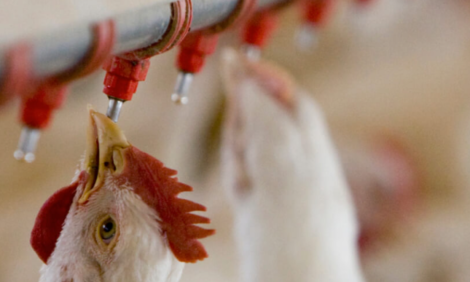



Weekly Overview: Prospects for the UK Poultry Sector
UK - Prospects for the UK poultry meat sector look generally positive, according to one of its leading advisers, speaking at an event in London this week. Taiwan continues its tough battle against highly pathogenic avian flu, while a new form of the H5N1 virus has been detected in British Columbia, Canada, for the first time.The UK poultry industry is the second largest in the European Union (after France) and generates £6 billion each year, contributes £1 billion to the Exchequer and employs 73,000 people, according to Gary Ford [pictured].
Chief Poultry Adviser with the National Farmers' Union, Mr Ford was addressing the Outlook 2015 conference, organised by the Agriculture and Horticulture Development Board, in London yesterday.
On the structure of the industry, he explained that the top five companies account for around 80 per cent of total UK production. These are all integrators and supply the big retailers. The remaining 20 per cent is supplied by independent companies whose main markets are Asia and the halal sector.
| Key players in UK poultry meat sector (and birds per week) |
|
| 2 Sisters | 6.1 million |
| Moy Park | 4.5 million |
| Faccenda | 1.9 million |
| Cargill (Sun Valley) | 1.8 million |
| Banham Poultry | 800,000 |
| Frank Bird Ltd | 500,000 |
| Highbury | 350,000 |
| IHP | 400,000 |
| Crown Poultry | 300,000 |
| Gafoor Poultry | 200,000 |
| Traditional Norfolk Poultry | 60,000 |
| UK Total | 17.5 million |
| Source: National Farmers Union | |
Poultry is the most popular meat purchased in the UK, despite slight falls in the last two years, which Mr Ford attributed mainly to a lack of promotion by retailers and, to a lesser extent, by scares relating to food safety. Generally speaking, chicken performs well during times of economic recession as it is cheaper than other meats, he said.
There is a concern, in fact, that production is expanding too rapidly, he said. This results from a long-term increase in price of 37 per cent between 1995 and 2014, and annual per-capita consumption rose by 57 per cent between 1990 and 2013 to reach 33kg.
Around 18 million chickens are reared and slaughtered in the UK each week, while demand is for around 22 million birds, and so the country imports some quantities of the most popular cuts, particularly breast meat.
UK chicken exports have been on an upward trend over recent years, mainly to South Africa. However, the recent outbreaks of avian flu resulted in 14 countries putting a (hopefully temporary) stop to that trade, Mr Ford said.
Looking ahead 10 years, he forecasts positive developments in production and consumption, while farmer confidence is high in the sector.
Among the threats to the poultry industry looking ahead, Mr Ford identified Campylobacter, the Transatlantic Trade and Investment Partnership and the ever-present threat of avian flu.
Opportunities he highlighted were the increasing use of biomass heating systems in poultry production, poultry litter combustion, new feed ingredients such as insect protein and the strong support from UK supermarkets, discounters and the service sector for UK poultry meat.
Turning to bird flu news, Taiwan has this week reported 110 new outbreaks of the disease affecting more than 700,000 poultry, mainly geese but also ducks, chickens and turkeys.
The presence of the H5N1 virus has been confirmed in a hobby poultry flock in British Columbia for the first time.
There are almost daily reports from China of new cases of H7N9 flu in people, and there has been a third fatality from the H5N6 virus.








